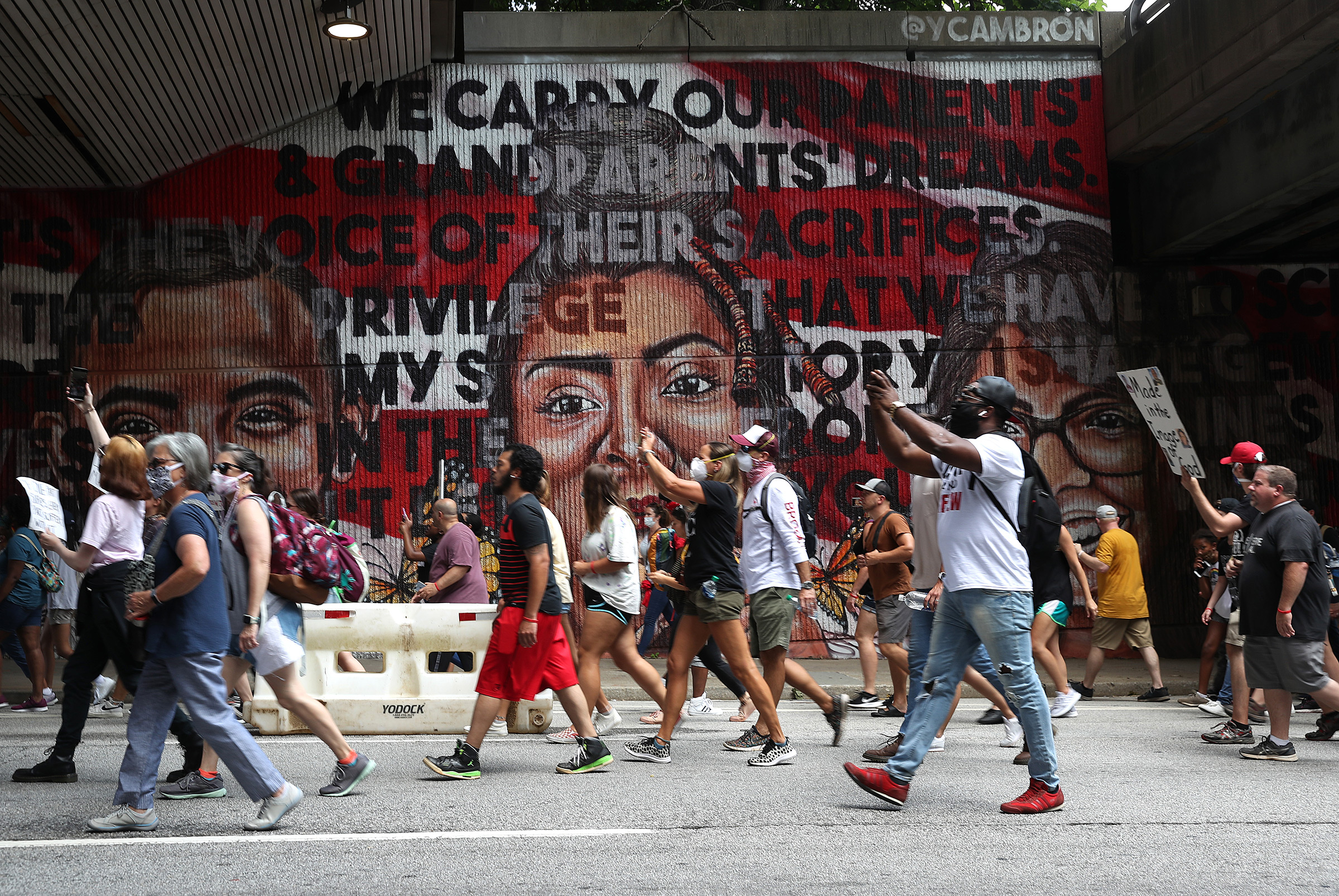
I remember African Americans in my hometown of Cleveland, Ohio, protesting the violent racism they endured when I was a young woman in the 1960s. I remember thinking that it had nothing to do with me. I have learned since that everyone, but, particularly white people, must address our insidious negative beliefs about Black people that cause us to tolerate the reality that Black people are disproportionately harmed by policing and the legal system.
I saw that white and Black people are not treated equally in the hands of law enforcement in 1991 when four police officers brutalized and beat Rodney King during an arrest. Around that same time a white relative of mine had an encounter with the police and his experience could not have been more different.
And in 2014 I saw it when Tamir Rice, a 12-year-old boy from Cleveland, was playing with a toy Airsoft gun when a neighbor called police to investigate the “probably fake” gun, despite Ohio’s open carry laws. Police shot Tamir within two seconds of arriving at the scene and he tragically died the next day.
This is the impact of racial bias: The neighbor made assumptions about Tamir because he was Black. The police responded harshly because he was Black. Racial bias extends beyond one neighbor or pair of officers. I see, sadly, that our society is dangerously and violently biased. We must face our subtle and overt racist beliefs to truly understand the actual problem we need to solve.
When it comes to racial bias, you either participate in it actively or through silence, or you use your power and privilege to dismantle it. Each day you make this choice – when you serve as a juror, when you call the police or see someone else call and when and for whom you vote. If oppression happens, then we are allowing it to happen and we are all in the position to stop it.
Ava DuVernay’s documentary “13th” represented a tipping point for me; it called me to act boldly. It shows powerfully how in our country, Black people are disproportionately impacted by every part of our justice system, from excessive monitoring and the policing of their communities, to receiving longer sentences for the same crimes as their white counterparts. I felt an urgency to address the racial bias behind mass incarceration, so in partnership with Ava and Darren Walker of the Ford Foundation, I launched the Art for Justice Fund. Over the past three years, we invested over $70 million in artists and advocates focused on ending mass incarceration. I recognize my privilege in being able to establish this effort. And I believe those of us with more privilege have a greater responsibility to do more. However, each of us can work against racism in our own way.
Where should one begin? We have no shortage of Black thought leaders to learn from. Watch 13th. Read Bryan Stevenson’s Just Mercy or follow Sherrilyn Ifill of the NAACP Legal Defense and Educational Fund on social media. Read The Warmth of Other Suns by Isabel Wilkerson. Above all, embrace the lifelong journey of learning for a more racially equitable world.
People say I am a philanthropist and an art patron. I am proudly both. Most importantly, I have become an ardent ally for racial equity, which I am learning how to do better every day. I hope today is your tipping point because this fight belongs to everyone. Let’s do this, together.
More Must-Reads from TIME
- Why Biden Dropped Out
- Ukraine’s Plan to Survive Trump
- The Rise of a New Kind of Parenting Guru
- The Chaos and Commotion of the RNC in Photos
- Why We All Have a Stake in Twisters’ Success
- 8 Eating Habits That Actually Improve Your Sleep
- Welcome to the Noah Lyles Olympics
- Get Our Paris Olympics Newsletter in Your Inbox
Contact us at letters@time.com